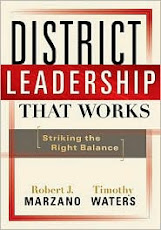An issue that continues to plague schools across the nation is students who choose to victimize others by bullying and harassing them. It is imperative for schools to be able to protect students against bulling and harassment. There are constant examples of the negative effects of this senseless behavior in the news nearly every day.
Many parents and students have asked me what the difference is between bullying/harassment and the common “joking around” students encounter on a daily basis. We define bullying and harassment as targeting students on the basis of race, creed, color, religion, national origin, marital status, or disability. Bullying also entails conduct of a verbal or physical nature that is designed to embarrass, distress, agitate, disturb, or trouble other students. Student-to-student harassment may include, but is not limited to:
· Verbal, physical, or written harassment or abuse
· Repeated remarks of a demeaning nature
· Implied or explicit threats
· Demeaning jokes, stories, or activities directed at a student
· Hazing activities.
Students who feel they have been harassed should communicate to the harasser that the student expects the behavior to stop, if the student is comfortable doing so. If the student needs assistance communicating with the harasser, the student should ask a teacher or principal to help. If the student has asked the other student to stop, and that student continues the detrimental behavior, the child needs to tell a teacher, counselor, or the principal immediately. The principal will then investigate the matter.
The abbreviated version is this: if your child asks someone to stop a specific behavior, and the other child does not stop, then your child needs to talk to the principal! The other major point that I have been communicating to our students this month is this, the number one way to stop bullying and harassment in our schools is for the bystanders to stop reinforcing the negative behavior and tell their peers to stop! In the middle school we do our best to have teachers in areas to supervise our kids; however, we know there are places that adults cannot always supervise. These areas can include bathrooms, buses, and in the locker rooms. We must rely on students to do the right thing by confronting the negative behavior, or at the minimum tell an adult. We can’t help a situation we don’t know about.
The final way we can help bullying and harassment in our schools is with parent support. Talk to your kids about bullying and harassment. If your child comes home and says they are being bullied and no one is doing anything about it, it may be a situation that we don’t know that it is happening to your child. Please communicate those situations with your school.
In closing this month, my number one priority at Graettinger-Terril is to ensure our students feel safe in our building. Not just physically, but emotionally safe as well. We have great kids, and great staff, but bullying and harassment can show its ugly face in even the finest of school systems. Through communication with students, parents and teachers, we can all do our part to make our schools safe environments for our kids to learn and grow in everyday.


